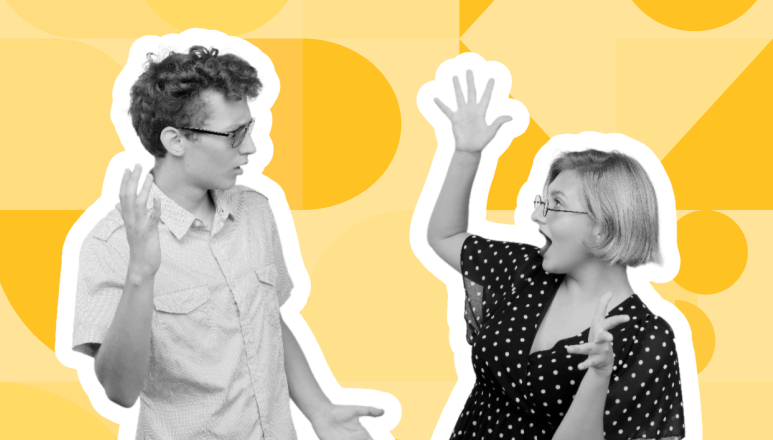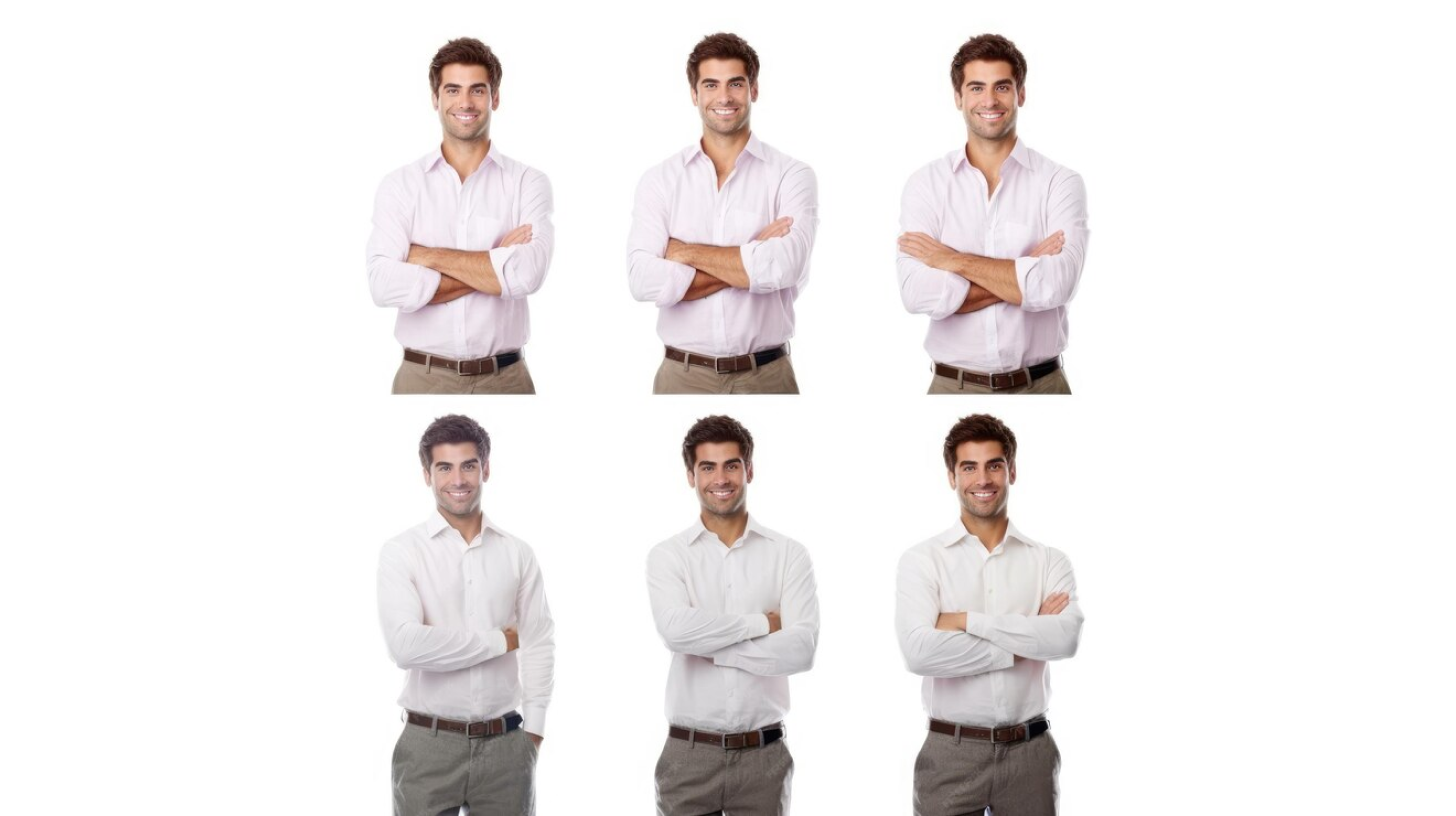This comprehensive guide serves as your gateway to both understanding individuals through their body language and cultivating assertive nonverbal communication.
Explore our informative video below, unveiling insights on decoding 7 key body language cues:
Within this article, we will delve into indispensable knowledge to enhance your proficiency in mastering the art of body language.
Before delving into the details, don’t forget to participate in our body language quiz by following this link to assess your prowess in interpreting nonverbal cues!
Understanding Body Language: A Brief Overview
The realm of body language encompasses the study of nonverbal cues, encompassing gestures, facial expressions, and eye gaze, all of which serve as channels for conveying a person’s emotions and intentions. A fascinating aspect of communication, body language comprises 11 distinct types that play a crucial role in expressing ourselves. Unlike verbal communication, body language is frequently expressed unconsciously, forming a substantial component of our overall means of conveying messages.
The Significance of Body Language in Communication
Body language constitutes a crucial element of human communication, offering a window into our feelings and attitudes, often revealing nuances that words might conceal. The ability to decipher body language not only enhances the quality of conversations but also fosters better relationships and interactions.
Proficiency in reading body language is associated with success in various aspects of life, including career advancement and the cultivation of meaningful connections. It can be likened to receiving valuable insights or “freebies” in navigating life’s complexities.
For an in-depth exploration of the importance of body language, you may find my detailed article informative: MICRO EXPRESSIONS AND LIE DETECTION IN POKER
Body language can be broadly categorized into two main types—positive or open body language and negative or closed body language. These categories serve as indicators of how receptive individuals are to their external environment. Whether engaging in networking, delivering a presentation, or embarking on a first date, the ability to interpret these cues proves instrumental in gauging others’ openness or reservation.
In essence, reading body language provides a unique glimpse into the minds of others, making it a skill akin to the art of mind reading.
Open Body Language Examples
Expressing Interest with the Eyebrow Flash

The Eyebrow Flash, a swift and subtle gesture where the eyebrows briefly elevate for less than ⅕ of a second, serves as a powerful indicator of interest.
This nonverbal cue is versatile and is employed in various contexts:
- Professional Interest: In professional settings, the eyebrow flash signifies approval, agreement, gratitude, or confirmation. It functions as a nonverbal “yes” during conversations, emphasizing engagement.
- Romantic Interest: The eyebrow flash can also convey romantic interest, adding a layer of nonverbal communication to express attraction or positive feelings.
- Social Interest: When two individuals recognize each other socially, the eyebrow flash becomes a signal of joy and acknowledgment. It communicates the happiness of seeing someone familiar.
Moreover, the use of the eyebrow flash draws attention to the face, making it an effective tool for teachers or speakers to emphasize a point or captivate an audience.
Interestingly, cultural variations exist, and some cultures, like the Japanese, may perceive this cue as indecent and avoid its use.
Scientifically, researchers at the University of Pittsburgh 1 have identified the eyebrow flash as a universally recognized form of greeting, suggesting its prevalence across diverse cultures.
This universal nature is not limited to humans; even monkeys and apes utilize this gesture.
Utilizing the Eyebrow Flash:
- To Show Liking: When encountering someone you appreciate or wish to form a positive impression, accompany a quick eyebrow flash with a warm smile.
- To Increase Engagement: When aiming to capture someone’s attention before conveying a message, raise your eyebrows just before speaking.
- To Show Interest: When curious or intrigued, let your eyebrows reflect your interest effectively.
Incorporating the eyebrow flash into your nonverbal repertoire enhances your ability to express and interpret interest in various social scenarios.
Mastering the Equal Handshake
An equal handshake, characterized by seven key elements, stands as a testament to mutual respect and positive interaction. Here are the essential components:
- Good Eye Contact: Establishing good eye contact contributes to the sincerity and openness of the handshake.
- Warm, Genuine Smile: A friendly smile adds warmth and authenticity to the handshake, fostering a positive atmosphere.
- Extended Arm with Slight Bend: Presenting an extended arm with a subtle bend at the elbow ensures a comfortable and approachable handshake posture.
- Fingers Pointing Downward: Approach the other person’s hand with fingers pointing downward, contributing to a smooth and natural handclasp.
- Equal Pressure: The pivotal aspect of the equal handshake is maintaining consistent pressure during the handclasp. This balance signifies confidence and mutual respect.
- Slight Forward Lean: Leaning slightly forward toward the other person indicates engagement and interest in the interaction.
- Slow Release after 1–2 Seconds: Concluding the handshake with a slow release after a brief duration, typically 1–2 seconds, ensures a graceful and positive conclusion.
Interpreting the Equal Handshake:
An equal handshake is more than a mere physical gesture; it communicates confidence, openness, and a sense of shared power. Participants in such a handshake often experience a positive and mutually respectful exchange.
Applying the Equal Handshake:
Before initiating a handshake, consider the context and the other person’s potential receptiveness. Salespeople, for example, learn the importance of gauging the appropriateness of a handshake. If uncertain, a head nod or waiting for the other person to initiate may be suitable.
It’s crucial to recognize that cultural differences exist, and greetings may vary. In some cultures, bows or cheek kisses are customary. When in doubt, opt for a handshake only when confident that it will be warmly reciprocated. Older individuals may prefer a gentler grip, and when engaging with higher-status individuals, follow their lead on the length and pressure of the handshake for optimal rapport building.
Mastering Authentic Mirroring
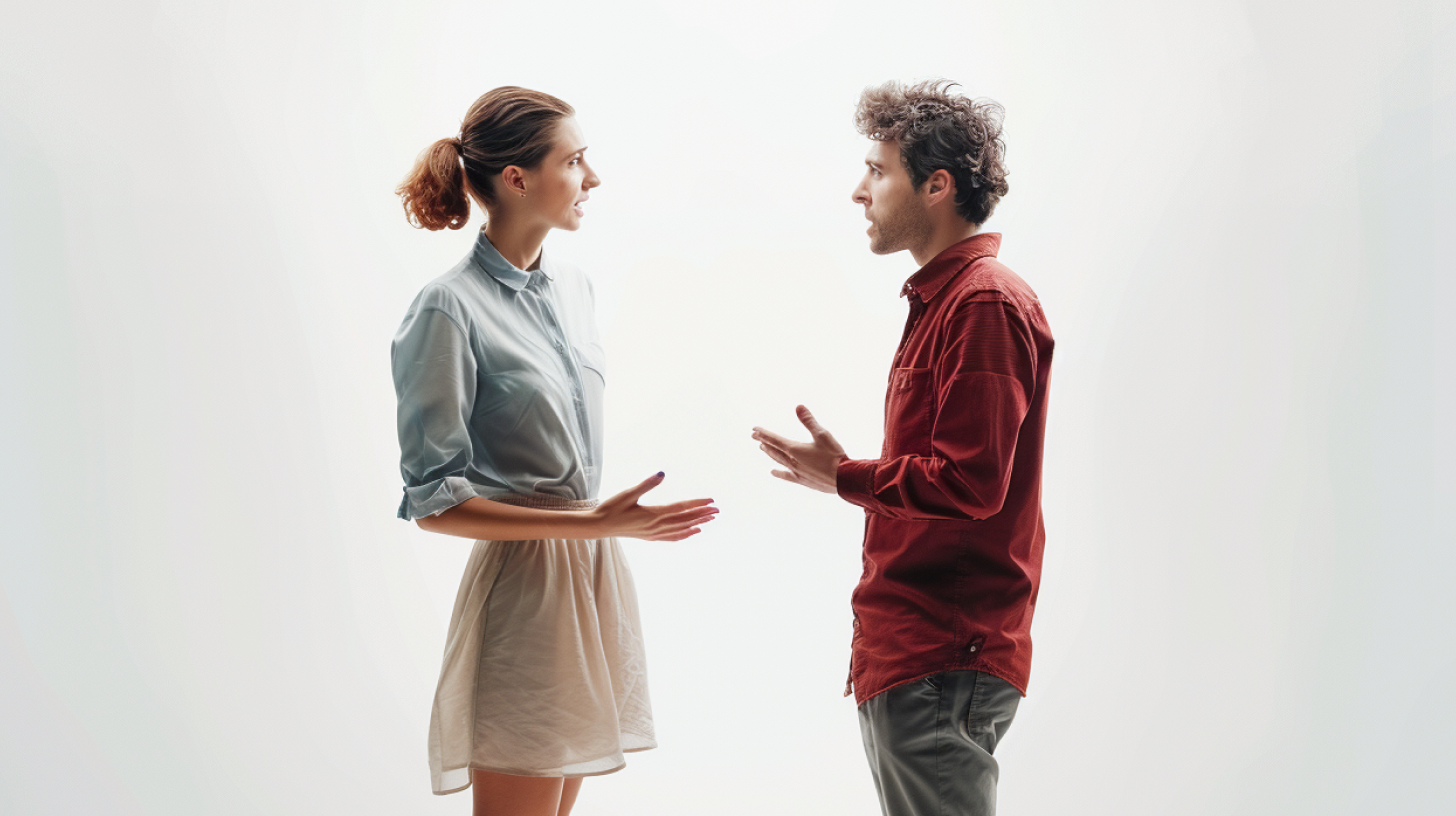
Authentic mirroring involves adopting similar body language as others in a social setting, showcasing a genuine desire to connect. Here’s a closer look at the nuances of authentic mirroring:
What it Means: Mirroring is a potent cue for building rapport, signifying a genuine interest in connecting with others. Typically, people engage in mirroring with those they like. Observing someone mirror our body language fosters a sense of similarity and affinity.
The Science: Numerous studies underscore the power of mirroring in various contexts:
- Greater Compliance 2: Mirroring increases compliance with requests, making it a persuasive technique.
- Higher Sales Numbers 3: In sales, mirroring contributes to improved performance and higher sales figures.
- Positive Evaluations : Mirroring, especially with managers, enhances rapport and positive evaluations.
- Increased Tips 4: Service professionals can experience larger tips from customers when employing mirroring techniques.
The Science Behind Mirroring: Mirroring is ingrained in our brain’s functioning. 5 Professor Joseph Heinrich from the University of Michigan explains that mirroring promotes cooperation, leading to benefits like increased food resources, better health, and economic growth in communities.
How to Use it: When employing mirroring, it’s crucial to do so subtly. Overly obvious mirroring, such as vigorously nodding in agreement when the other person does, may raise suspicion or diminish rapport.
Consider the following tips for effective mirroring:
- Mirror Subtly: Adopt similar body language without making it overly obvious.
- Avoid Over-Mirroring: If the other person displays enthusiastic gestures, match their energy without appearing exaggerated.
- Respect Boundaries: Choose not to mirror someone if you’re disinterested or want to establish boundaries.
- Counter Negative Cues: If faced with negative body language from the other person, display open and positive gestures to encourage a shift in their demeanor.
Mastering authentic mirroring involves a nuanced approach that enhances connection and rapport in social interactions.
Perfecting Mutual Gazing

Mutual gazing involves maintaining eye contact at a comfortable level during interactions. Delve into the intricacies of this nonverbal cue:
What it Means: Mutual gazing strikes a balance in eye contact—neither too intense nor lacking. Prolonged eye contact, particularly from high-status individuals or celebrities, can evoke feelings of favoritism. Increased eye contact also signifies curiosity and attentiveness.
Warning: Avoid constant, unbroken eye contact, as it can convey territorial signals and aggression. Mutual gazing is about establishing eye contact during agreement, active listening, exchanging ideas, or admiring yourself in the mirror.
The Science:Maintaining eye contact for just 30% of the time significantly enhances the retention of spoken information. It also contributes to the perceived persuasiveness, truthfulness, sincerity, and credibility of the speaker. Certain personality traits, such as extraversion, agreeableness, and openness, are associated with more mutual gazing.
How to Use it: To leverage mutual gazing effectively:
- Bonding: Increase eye gaze during interactions to enhance bonding.
- Occasional Glances: Avoid sustained eye contact, as too much can be perceived as threatening and induce discomfort.
- Vary Intensity: Adjust the intensity of your gaze based on the context and your relationship with the other person.
Mastering mutual gazing involves finding the right balance to foster connection and convey attentiveness without veering into discomfort 6.
Promoting Openness with a Clear Space
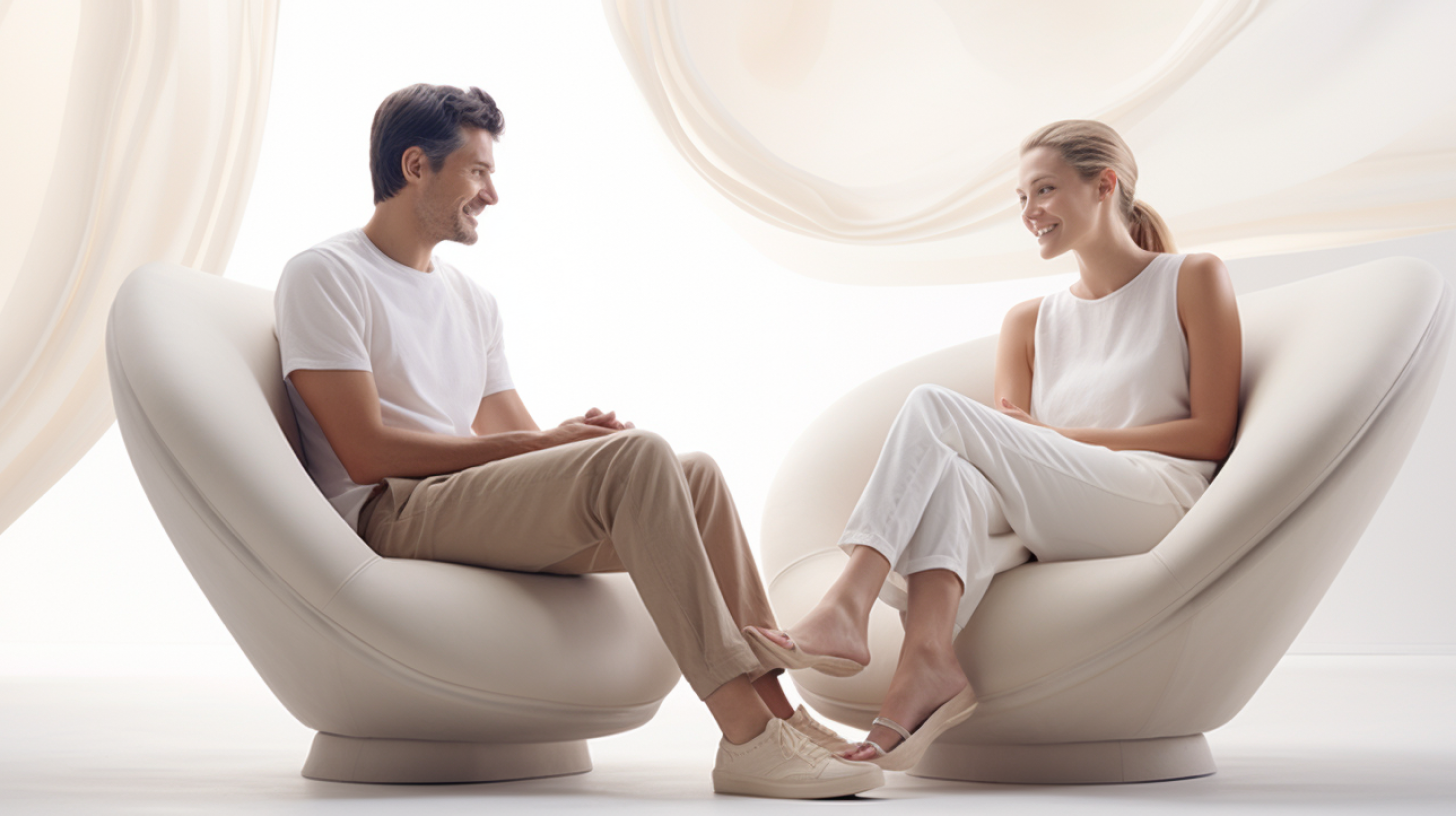
Maintaining a lack of barriers during conversations is a powerful nonverbal cue. Explore the nuances of this communication element:
What it Means: A clear space devoid of physical barriers, such as phones, bags, or glasses, communicates undivided attention and openness. The absence of objects signals your commitment to being fully present in the interaction.
Objects, even seemingly innocent ones like a coffee mug, can create distractions or act as shields, hindering meaningful exchanges. Interestingly, the mere presence of a smartphone nearby can impact cognitive function negatively 7.
How to Use it: To convey openness and attentiveness:
- Mindful Conversations: Be aware of any objects or actions that may form barriers during a conversation.
- Phone Etiquette: Put your phone down or away to eliminate distractions.
- Free Hands: Keep your hands free, avoiding unnecessary objects, to encourage natural gestures.
Creating a clear and open space not only enhances your perceived openness but also encourages reciprocity from the other person. This simple yet impactful practice fosters a conducive environment for meaningful communication.
Expressing Genuine Joy with Duchenne Smile

Unlock the secrets behind the Duchenne smile—a genuine expression of happiness defined by specific facial features.
What it Means: The Duchenne smile signifies authentic happiness and is distinguished by the appearance of “crow’s feet” wrinkles around the eyes, coupled with upturned corners of the mouth. Unlike fake smiles, the Duchenne smile is a true reflection of positive emotions. While it’s challenging to convincingly fake this smile, many social smiles in daily interactions are often prompted by politeness rather than genuine joy.
The Science:
- Infants as young as several weeks old exhibit the Duchenne smile, particularly directed at their mothers, showcasing its early emergence.
- The Duchenne smile triggers the release of endorphins, contributing to positive emotional experiences.
- Even congenitally blind athletes display distinct Duchenne smiles based on their performance, indicating the universality of this expression.
How to Use it:
- Smile with Your Eyes: Ensure your eyes convey warmth along with the smile.
- Widen Your Smile: Activate the muscles around your eyes by smiling broadly.
- Sustained Smiling: Maintain the smile beyond the immediate encounter to enhance authenticity.
Example: Watch George W. Bush exhibit a candid Duchenne smile in a lighthearted moment: https://youtu.be/ew7yUtVhV6w
Mastering the Duchenne smile adds a genuine touch to your expressions, fostering positive connections and authentic emotional exchanges.
Fostering Connection through Shared Laughter
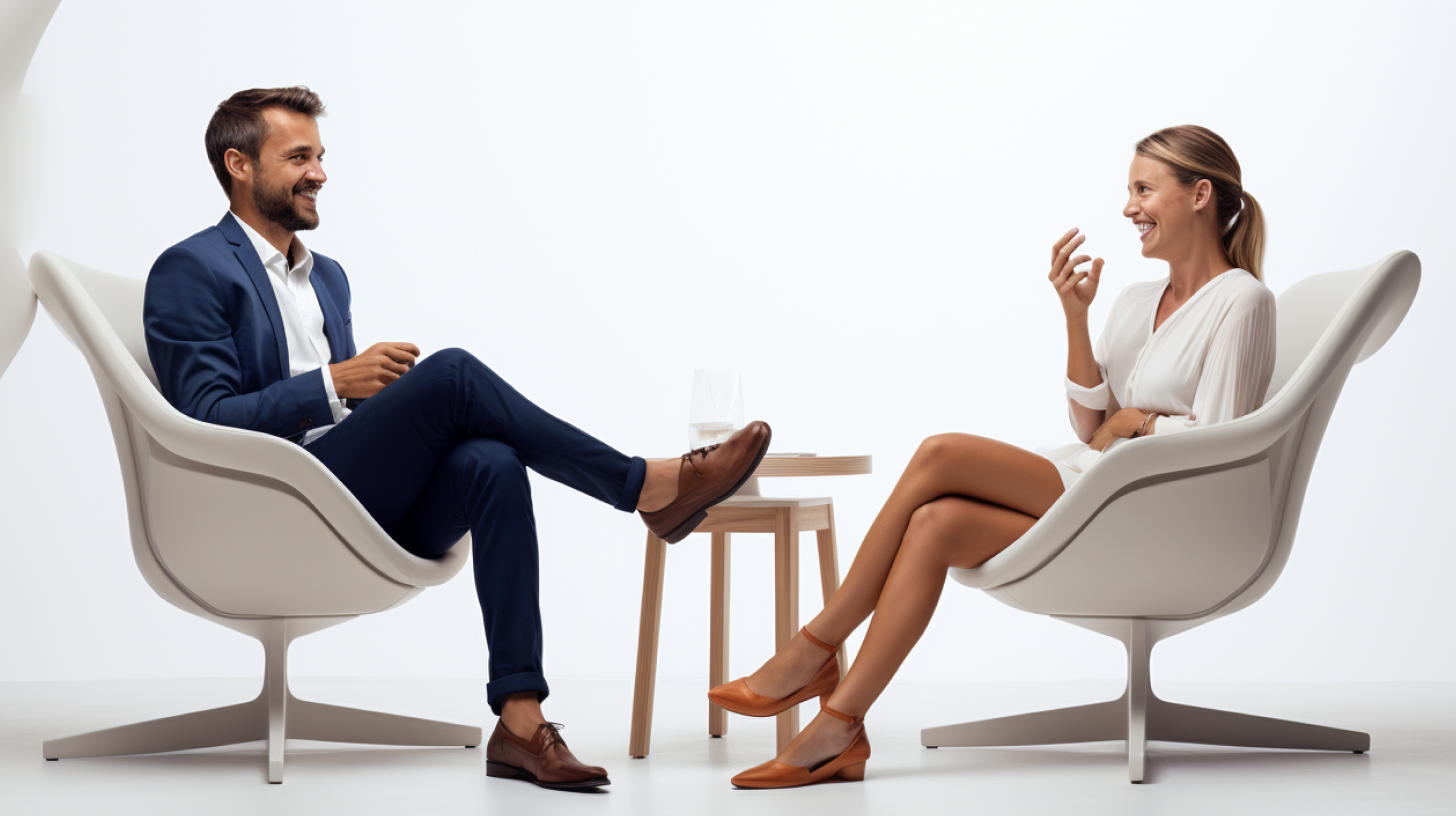
Discover the significance of shared laughter—a delightful exchange of mirth between individuals in response to humor:
What it Means: Shared laughter is a positive indicator of openness to connection. When your joke elicits genuine laughter from the other person, it signifies a willingness to engage and establish or strengthen a relationship 8. Laughter acts as a social lubricant, fostering relaxation and indicating a person’s comfort in the interaction.
3 different situations:
- alone,
- with a same-sex stranger, and
- with a same-sex friend.
The Science:
- Neurologist Henri Rubenstein found that just one minute of laughter can result in up to 45 minutes of subsequent relaxation.
- Adults, on average, laugh only about 15 times per day, emphasizing the importance of incorporating laughter into social interactions.
- Laughter occurs more frequently in social settings, as demonstrated by Robert Provine’s study, highlighting its role in connecting people.
How to Use it:
- Inject Humor into Conversations: Integrate light-hearted moments or jokes into your interactions to evoke genuine laughter.
- Contrarian Responses: Surprise your audience by providing unexpected responses to add an element of humor.
- Follow Jennifer Lawrence’s Lead: Embrace humor in unexpected ways to create memorable moments, as demonstrated by Jennifer Lawrence: https://youtu.be/frPxeO7JP90
Master the art of shared laughter to create a positive and enjoyable atmosphere, strengthening your connections with others.
Engage with Open Palms for Effective Communication

Maximize the impact of your hand gestures by ensuring your palms are visible and not concealed. Avoid pockets, hands behind the back, or closed fists, as these can create barriers against open palms.
Meaning: The display of open palms is associated with honesty and sincerity. Additionally, it can serve as a gesture of inquiry, making it a versatile and powerful nonverbal cue.
Ever encountered a situation where someone appeared friendly, yet a subtle unease lingered? The absence of visible palms might have played a role.
From an evolutionary perspective, closed palms trigger signals of potential danger, prompting our brains to stay vigilant. Concealed hands may suggest hidden threats or deceptive intentions.
How to Use it:
- Gesture with Open Palms: During hand gestures, maintain open palms to convey honesty and openness effectively.
- Face Palms Upward: Position your palms facing upward rather than downward, reinforcing an approachable and transparent demeanor.
Embrace the practice of open palms to enhance your nonverbal communication, fostering trust and authenticity in your interactions.
Note: Explore more about effective communication and nonverbal cues [here] MICRO EXPRESSIONS AND LIE DETECTION IN POKER .
Enhance Connection with Leaning In
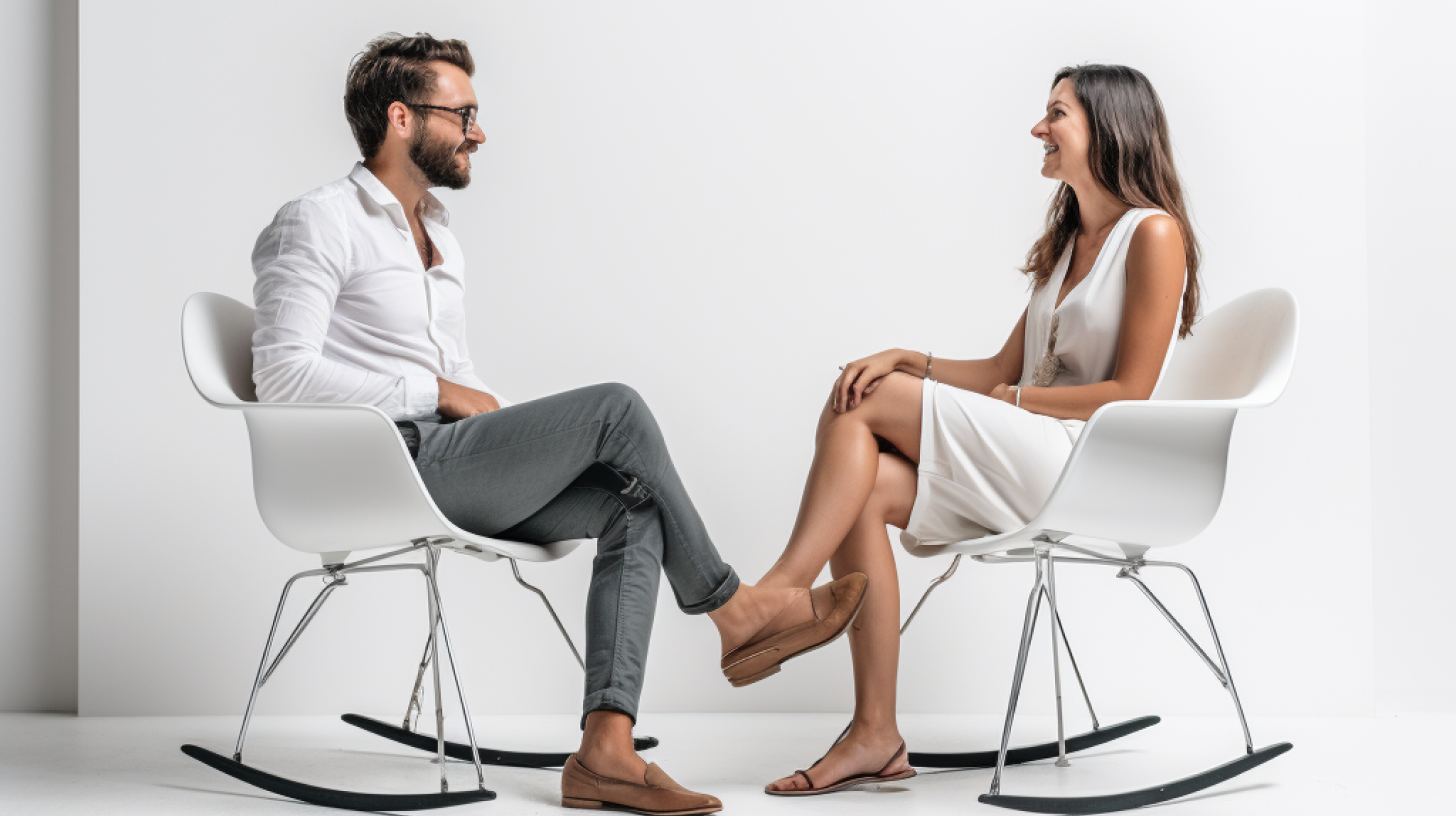
Subtle leaning toward your conversation partner signifies genuine engagement and interest, creating a conducive environment for meaningful interaction.
Meaning: Leaning in during a conversation communicates a heightened level of presence and interest. This nonverbal cue indicates a strong connection and focus on the person you’re communicating with. It fosters intimacy and underscores your attentiveness and desire to connect on a deeper level.
The Science: Scientific studies 9 have demonstrated that leaning in contributes to improved understanding and communication. This physical closeness, termed “proximity” by psychologists, encourages a more open exchange of information, enhancing the quality of interaction.
How to Use it:
- Natural and Subtle Movements: Let your leaning in be a natural and subtle response, avoiding any exaggerated or abrupt gestures. The goal is to convey genuine engagement.
- Appropriate Timing: Use this body language cue when you genuinely want to connect or understand the other person. Ensure that your leaning is in sync with the comfort level of the person you’re engaging with, avoiding excessive forward movements that may cause discomfort.
Embrace the power of leaning in to enrich your conversations, demonstrating a sincere commitment to active listening and connection.
Note: Dive deeper into effective communication strategies and nonverbal cues MICRO EXPRESSIONS AND LIE DETECTION IN POKER
Foster Connection with a Gentle Touch
Thoughtful touches, such as a light pat on the back or a gentle touch on the arm, can convey empathy and openness, establishing a deeper emotional connection.
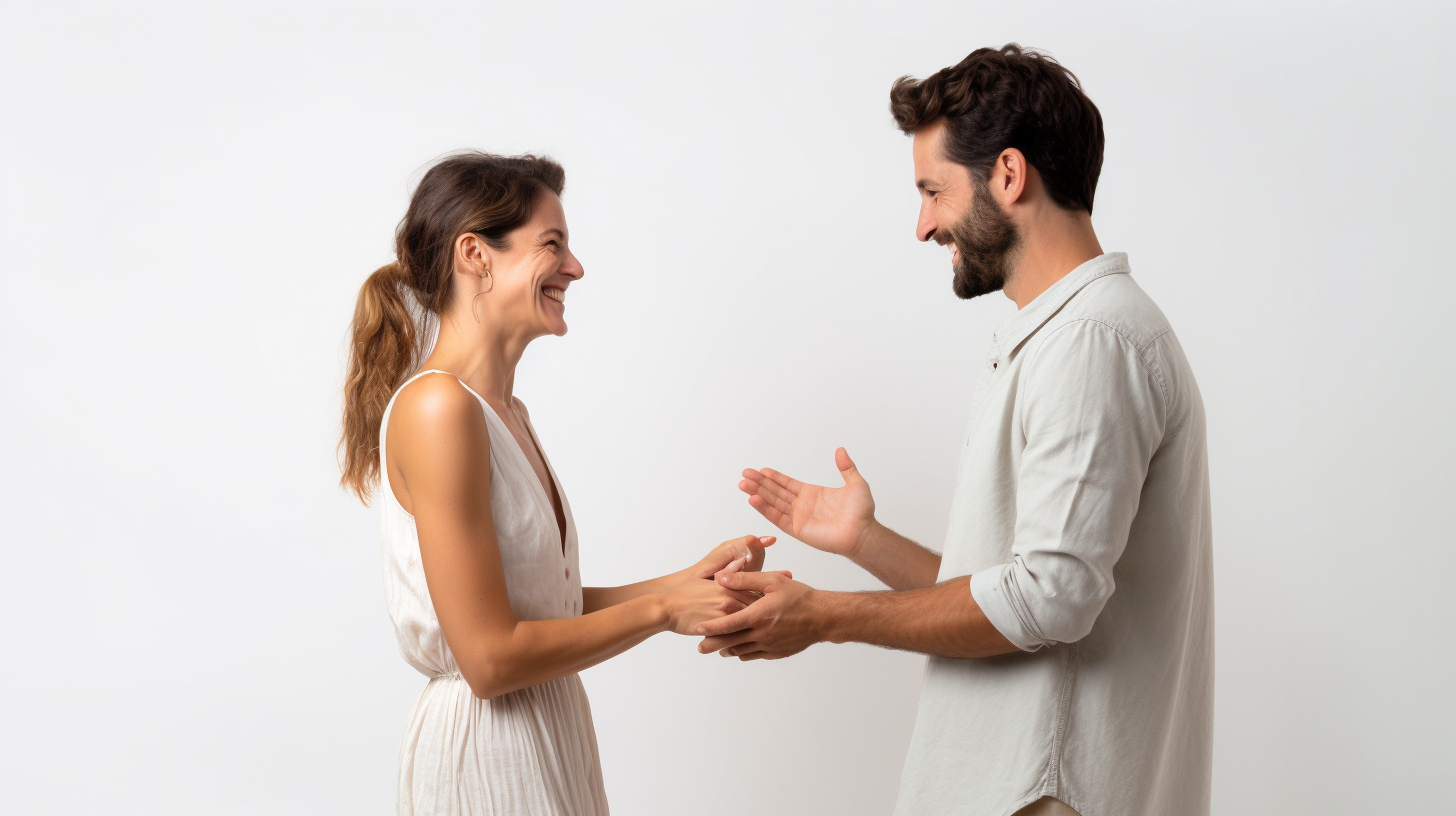
Meaning: Utilizing a warm touch, like a pat on the back or a light touch on the arm, communicates emotional presence and sensitivity to the other person’s needs or feelings. This nonverbal gesture has the potential to create an immediate bond, alleviate tension, or provide comfort.
The Science: Touch has the remarkable ability to trigger the release of oxytocin, often known as the “love hormone” or “bonding hormone.” Oxytocin plays a crucial role in fostering social bonds and attachment. Additionally, research has demonstrated that appropriate touch can reduce stress hormones, lower heart rate, and enhance feelings of trust and security, with the effects sometimes lasting beyond the immediate interaction.
How to Use it:
- Be Mindful of Comfort Zones: While warm touch can be a powerful tool for connection, it’s crucial to respect the other person’s comfort zone and cultural norms. Pay attention to cues indicating whether the individual is receptive to this level of physical contact.
- Timeliness is Key: A well-timed pat on the back can enhance the warmth of a friendly conversation 10, and a subtle touch on the arm can offer solace during more serious moments. Use warm touch judiciously, ensuring it aligns with the context and dynamics of the interaction .
Embrace the power of warm touch to deepen emotional connections, always exercising sensitivity to the preferences and boundaries of those you engage with.
Closed Body Language Examples
Crossed Ankles
The legs are crossed, and one ankle rests on top of the other. This can be done while sitting or standing, or even with the feet on the table.
What it Means: A person crossing their ankles might feel uneasy and closed-off, although there is an exception (which I’ll discuss below). The tighter their ankles are locked, the more anxiety or stress the person may be experiencing.
Women often sit with their ankles crossed, especially if they are wearing a skirt. However, sitting in this manner for an extended period is unnatural and should be considered peculiar, particularly if done by males.
Taking it a step further, individuals may secure their feet around the legs of a chair in high-stress situations. I refer to this as the “ejection seat” position because many people would adopt it if they were about to be launched out of their seat.
The significant exception to this rule is if you observe crossed ankles while the legs are stretched out on the floor. This can be a relaxed posture with the legs taking up space.
The Science: In a study of 319 dental patients by the Peases 11, ankle locking was a common body language cue performed by most patients: 68% of patients undergoing a checkup locked their ankles, 89% of patients locked their ankles as soon as they sat in their chair for dental work, and a whopping 98% of them crossed their ankles when receiving an injection.
It’s safe to say that these patients felt “de-feeted” during these situations!
Hand Clasping
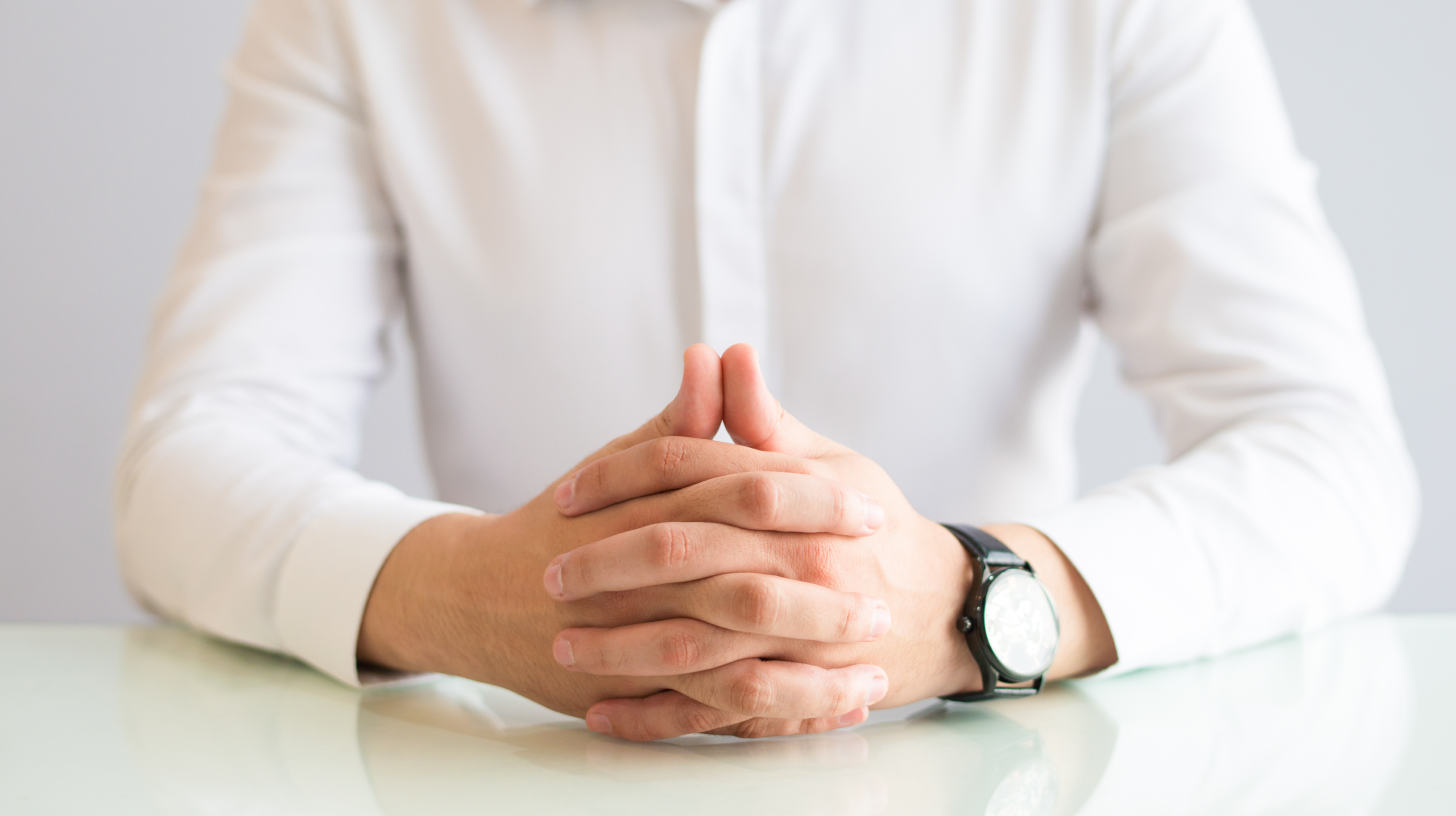
When there’s no one else to hold onto, we might opt to clasp our own hands. At times, we intertwine our fingers, and in other instances, we stack one hand on top of the other.
An intriguing observation is that whenever we interlock our fingers, one thumb consistently rests on top, signifying our dominant thumb. It often feels peculiar for most individuals if they switch thumbs and place their dominant one underneath (Peoplewatchig).
What it Means: The act of interlacing fingers serves as a self-soothing mechanism, akin to a “self-hug.” Essentially, individuals who engage in this gesture find comfort in the nostalgic reminder of the security felt while holding hands with parents during childhood.
As adults, this behavior tends to surface in moments of insecurity, such as during overly formal events or when meeting a nervous client at work.
How to Use it: Employ this gesture when you wish to conclude a meeting or end an interaction with someone. To project confidence, you can even use this cue but with your thumbs sticking out—signaling confidence rather than stress.
If you notice someone with interlaced fingers and aim to encourage openness, try injecting humor. Once they start laughing, you’ll likely observe a shift in their body language, indicating a more open and relaxed demeanor.
Blading

Ever watched a fencing match? Participants engage in a dynamic dance, constantly shifting back and forth in a strategic game of who-can-stab-the-other-guy-first – essentially, a sword-wielding version of chess. Interestingly, the way fencers position themselves mirrors the stance people adopt when closing off. Blading involves turning the torso away, maximizing reach while minimizing vulnerability to frontal attacks.
Given that up to 90% 12 of individuals are right-handed, blading typically involves the left foot (often the non-dominant one) stepping forward or the right foot stepping backward.
What it Means: Blading frequently precedes confrontations, whether in a bar brawl, boxing match, or a disagreement during a conversation. If your friend suddenly blades while engaged in a face-to-face conversation, it might signal defensiveness or feeling threatened.
An exception is when both individuals square up shoulder-to-shoulder, as seen when sitting together on a couch and watching TV.
Thumbs Hidden
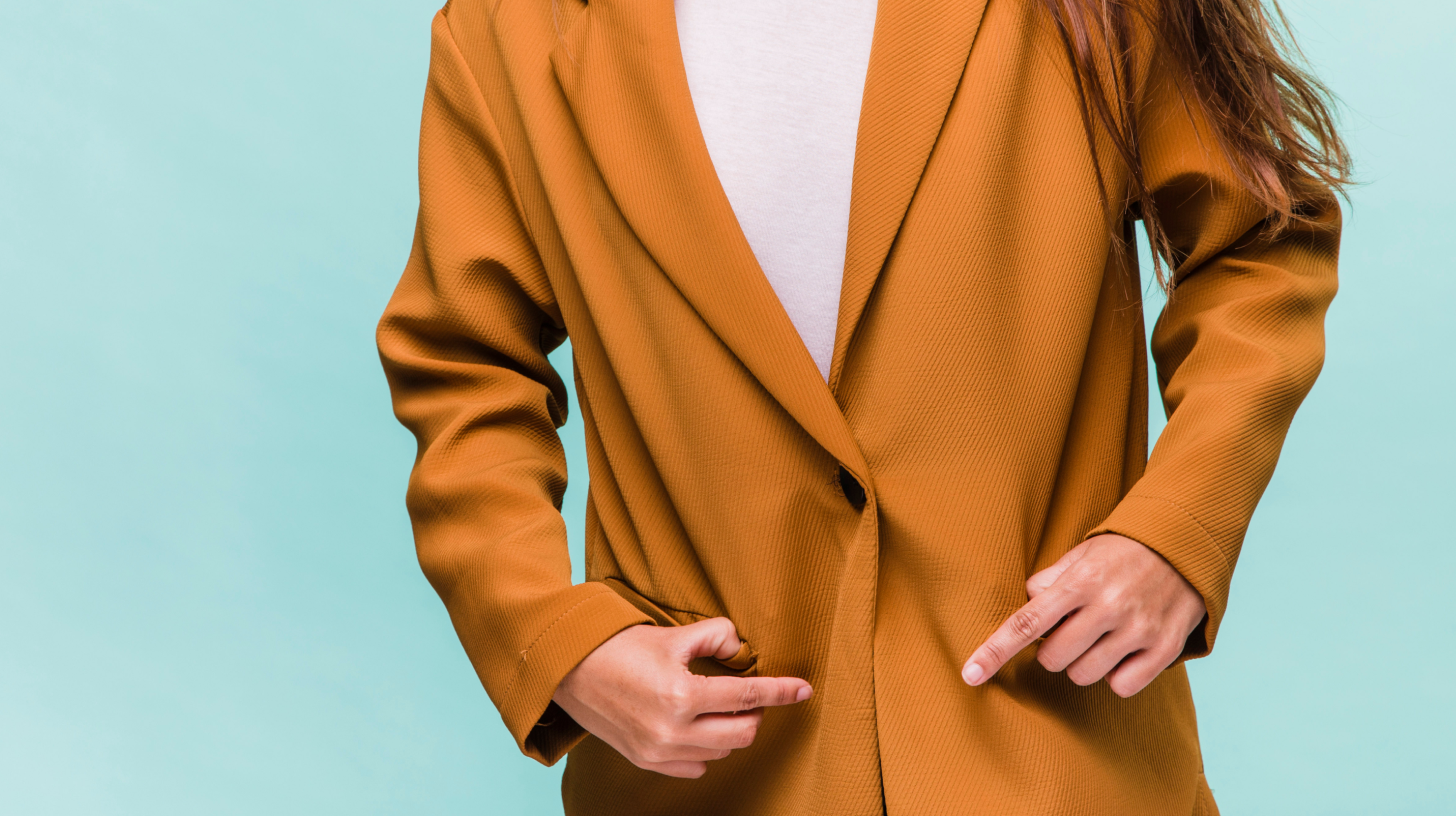
When thumbs are concealed, tucked away inside pockets or wrapped around other fingers, it often signifies lower self-confidence. This gesture is associated with feelings of concern, insecurity, or perceived threat. While high-status individuals might occasionally adopt this posture when at ease, they refrain from doing so when in a more assertive state.
How to Use it: Among close friends or trusted individuals, it’s acceptable to relax hands in pockets occasionally. However, for subtly making someone feel insecure, deeply burying your hands in your pockets can be an effective tactic.
Pop Quiz: Thumbs Out
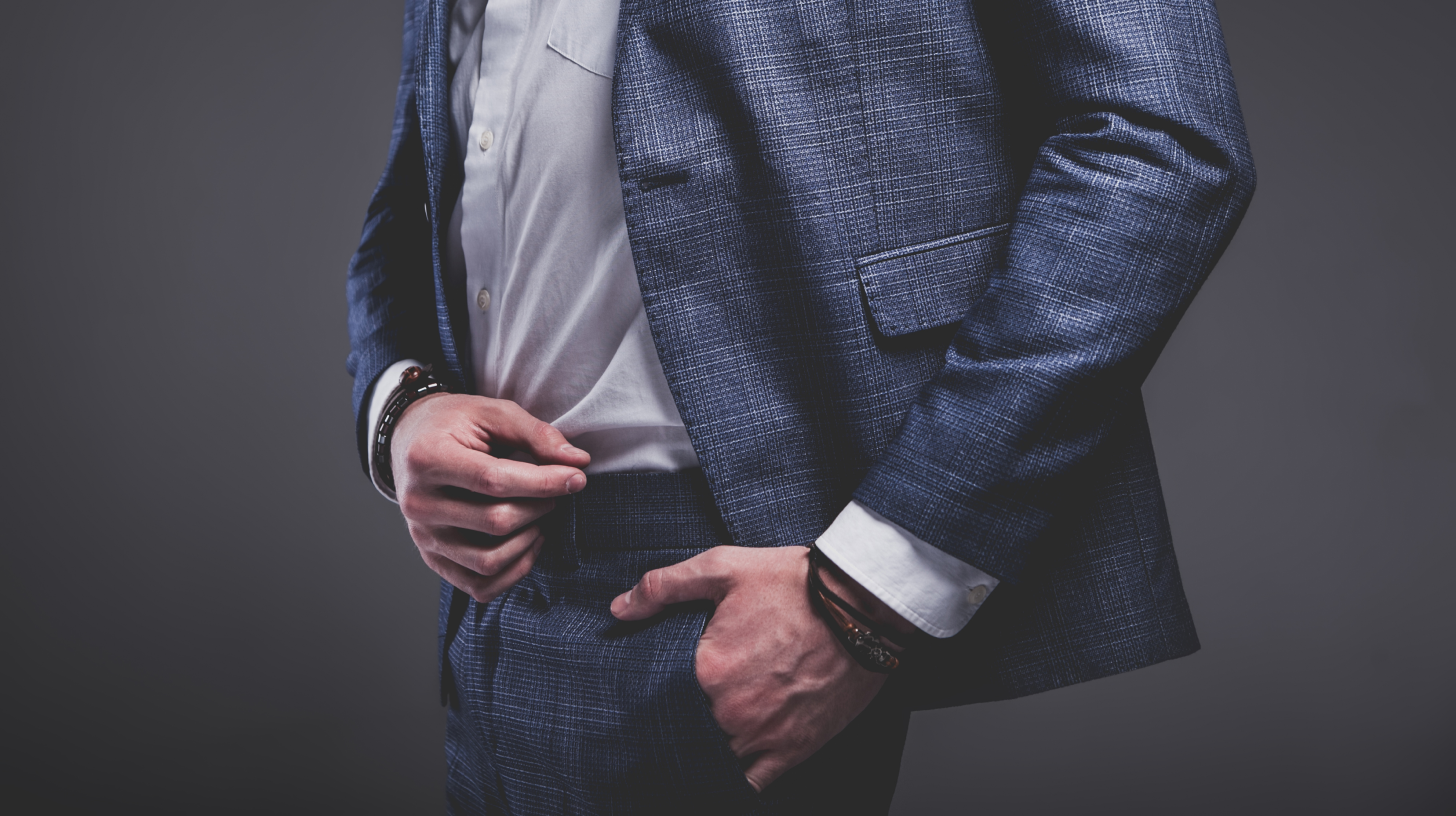
In the given picture, the person has hands in pockets, but thumbs are sticking out. What does this likely indicate?
- Confidence
- Nervousness or anxiety
- Anticipation
- Fear
Answer: a) Confidence. Despite the hands being in pockets, the exposed thumbs, considered the most powerful digits, signal confidence or assertiveness.
Neck Rubbing

When people rub their necks, it’s often on the side or back. In extreme cases, they may touch the suprasternal notch, where the neck meets the clavicle, more common in women.
What it Means: Neck rubbing usually indicates insecurity or stress, serving as a go-to stress-relief method for some individuals. Those who habitually rub their necks may exhibit a tendency to be more negative or critical than others.
The Science: Massaging the vagus nerve on the side of the neck triggers acetylcholine release, a neurotransmitter that signals the heart to slow down.
A Deadly Example: In a chilling case involving Jennifer Pan, a Canadian-born Chinese-Vietnamese woman, her consistent neck rubbing during a formal interview signaled high stress. Detectives eventually uncovered her staged murder story, exposing her deception. (Timestamp 36:47 in this video)
Physical Retreat
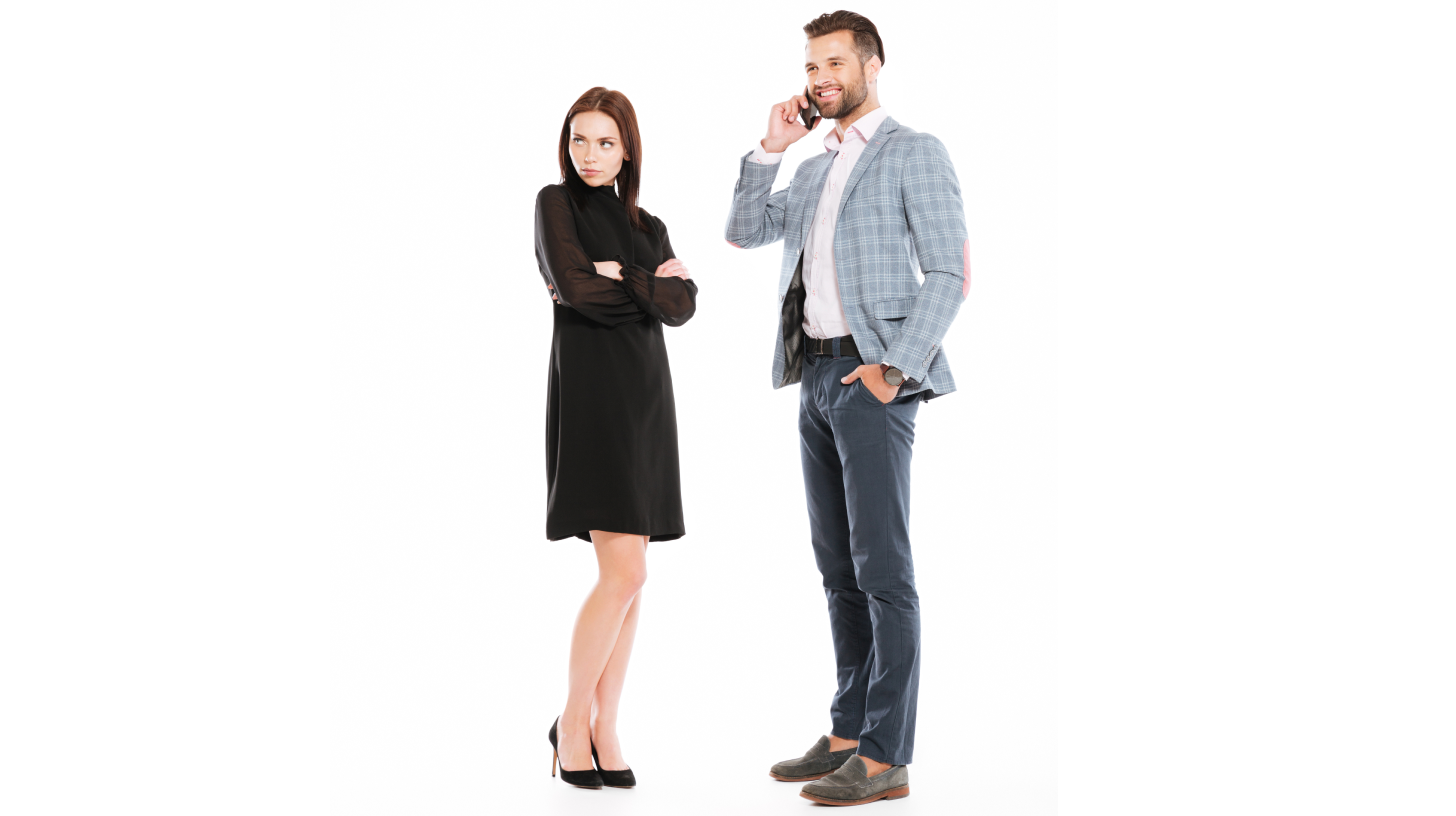
Taking a step back or leaning away from someone often implies a sense of disinterest or discomfort.
What it Means: The act of stepping back or leaning away in a conversation generally signifies a desire for more personal space, possibly stemming from feelings of discomfort, disinterest, or even distrust. This physical retreat subtly communicates that full engagement in the interaction is lacking.
The Science: A physical retreat can trigger psychological mechanisms associated with the fight-or-flight response, such as an increase in adrenaline 13. This signals to others that you may be in a defensive or guarded state, or even contemplating the idea of wanting to escape.
How to Use it: Understanding your own inclination to step back or lean away can provide insights into your feelings in a given situation. If you observe yourself retreating, it’s worthwhile to introspect and question why you feel the need to create more physical distance. On the flip side, if you notice someone else retreating, it could be a signal for you to reassess the situation and consider adjusting your approach.
How Do You Cross
Here’s a quick self-test for you: cross your arms. Now, let me make a guess—did you cross your left arm over your right one?
Research indicates that 7 out of 10 people cross their left arm over their right, suggesting a potential genetic component where the less dominant left arm protects the more useful right one. Trying to cross your arms the opposite way might feel surprisingly awkward!
Moreover, individuals exhibit unique ways of crossing their arms, as illustrated in the chart below, showcasing the various quirky ways people tend to cross their arms!
Hunched Shoulders

How often have you been reminded to “keep your shoulders back, head straight!”?
Surprisingly, hunched shoulders are becoming increasingly prevalent today, with people often slouching over, engrossed in their smartphones. This habit might even evolve into the norm as individuals develop chronically hunched shoulders from prolonged use of smartphones and laptops.
On a more serious note, individuals who exhibit extreme submissiveness in social situations, such as those dealing with clinical depression or self-proclaimed “social failures,” may adopt a permanent stoop, with rounded shoulders and a forward-hunched neck.
Meaning: This posture inherently signals defensiveness. Forward shoulders suggest an attempt to conceal something or a feeling of vulnerability, as this position effectively closes off the vulnerable neck and chest areas.
This particular stance is seldom seen on fashion runways or in magazines, as it instantaneously diminishes one’s attractiveness. In a way, this cue brings to mind the image of a turtle retracting into its shell, prompting the thought of renaming it to something like “turtling!”
Rubbing Eyes

Individuals who engage in eye rubbing typically use their index finger, middle finger, or thumb, varying from a gentle, split-second touch to more pronounced rubbing.
What it Means: Rubbing the eyelids serves as a method for calming down, acting as a “visual reset.” Essentially, this gesture communicates a desire for everything in front of the person to disappear, making it a common occurrence among high-stakes poker players after a loss or during arguments between frustrated couples.
It’s important to note that people also naturally rub their eyes to remove eye debris, so considering someone’s level of fatigue before attributing a negative connotation is crucial.
The Science: The act of rubbing the eyelids stimulates the vagus nerve, a specialized nerve 14 in the eyelids. This stimulation helps slow down heart and breathing rates when massaged.
During conversations or interrogations, individuals may resort to rubbing their eyelids, especially when faced with challenging or stress-inducing questions. This action is an attempt to break eye contact, reducing their own stress or anxiety.
The frequency of this gesture may be higher in men than in women, potentially due to societal conditioning that encourages women, especially those who wear eye makeup, to avoid rubbing their eyes.
How to Use It: If you’re having a tough day at work, consider finding a safe space, closing your eyes, and gently rubbing your eyelids while taking a breath. Just 30 seconds of this practice can be remarkably soothing, providing a sense of calm during a stressful day.
Fidgeting with Objects
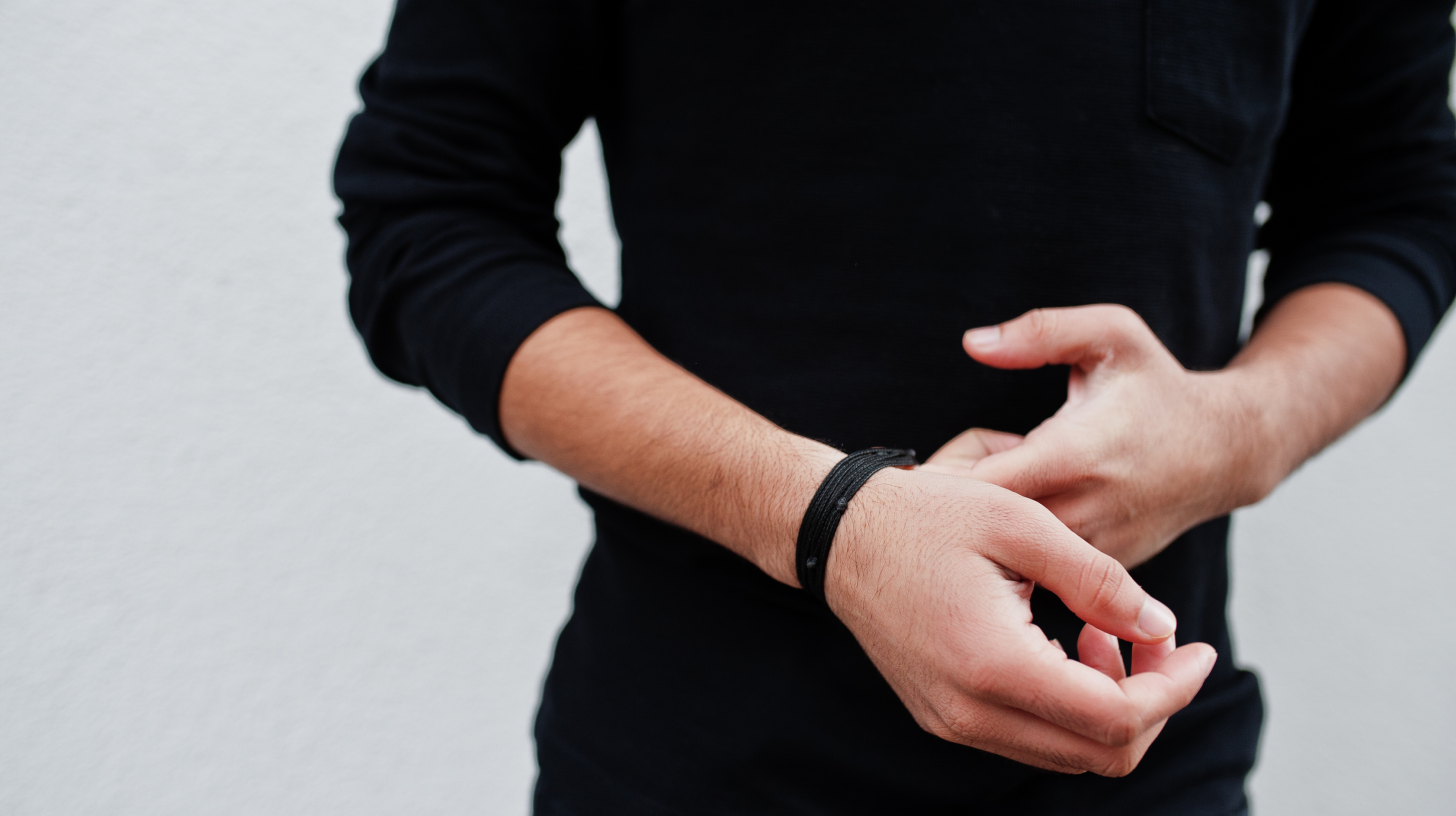
Fidgeting involves playing with nearby objects, whether it’s keys, coins, a pen, a ring, a necklace, or even the infamous fidget spinner.
What it Means: Fidgeting is often a clear signal of boredom. It suggests boredom with the conversation, with sitting down, and at times, even boredom with the company (ouch!).
Individuals who engage in fidgeting may subconsciously seek sensory reassurance 15, similar to how babies cling to their favorite toys. Alternatively, it may indicate anxiety, time constraints, or, in some cases, disappointment.
The Science: Observations at railway stations and airports have revealed a tenfold increase in displacement activities, including fidgeting, in flying situations compared to ordinary circumstances. People tend to fidget more when anticipating a flight, engaging in behaviors like checking tickets, handling passports, rearranging hand baggage, ensuring their wallet is in place, and occasionally dropping and picking up items.
In contrast, only 8% of people boarding a train exhibit signs of fidgeting, compared to a staggering 80% at a check-in desk for a transatlantic jumbo-jet flight (Desmong People).
How to Use it: If you’re seeking a quick exit from a conversation, subtly jangling keys or coins in your pocket or hands can serve as an easy yet potentially rude way to bring the interaction to a close. While it might be impolite, it can be effective if you genuinely need to end a conversation.
Historic Example: In 1969, when Elvis Presley made his first public stage appearance in nine years, signs of fidgeting were apparent. Judging by this picture, it’s worth considering what emotions he might have been experiencing during that moment.
Touching Ears
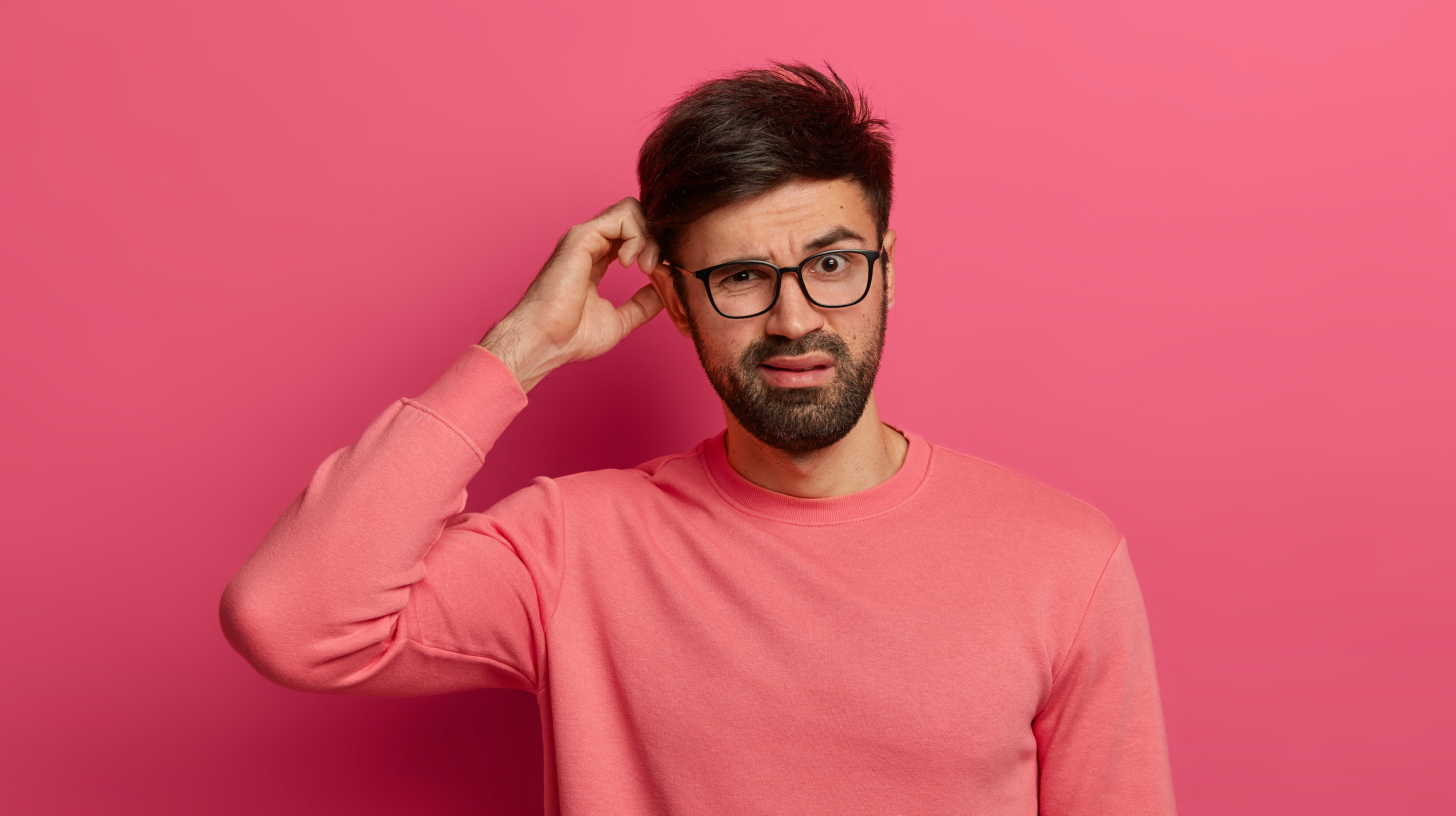
People engage in various actions involving the ears, such as rubbing, pulling, scratching, touching, picking, or vigorously rubbing.
What it Means: In general, repetitive self-touching of the ears, unless driven by a persistent itch, tends to indicate anxiety. While not a universal rule, such actions often serve as a way to alleviate tension throughout the body.
Dutch biologist Nikolaas Tinbergen 16 notes that people commonly scratch behind their ears to ease tension in stressful situations, like making a public speaking blunder in front of a large audience.
Effectively, those who touch their ears may be attempting to “block” information they’ve just heard, whether it’s a probing question or an accusation.
Example: A notable example is the American actress Carol Burnett, who gained fame for tugging on her left ear. She adopted this gesture at the end of each show to convey to her grandmother that she was doing well and loved her. Even after her grandmother’s passing, Burnett continued tugging her ear as a tradition and in memory of her beloved grandmother.
Pocketed Hands

The act of keeping hands in pockets often signifies disinterest or discomfort in revealing one’s thoughts and feelings.
What it Means: Having hands in pockets during a conversation typically communicates a reserved or closed-off attitude. It may suggest discomfort, disinterest, or an unwillingness to fully engage with the other person. This gesture can impede open communication and create an impression of being unapproachable.
The Science: Psychological research 17 suggests that hand gestures play a significant role in communication. Thus, having hands in pockets limits this expressive capability, potentially leading to misinterpretation or a lack of connection during interactions.
How to Use it: If you find yourself adopting this stance, it could be beneficial to ask, “Am I nervous, uncomfortable, or disengaged?” Similarly, observing someone else with hands in pockets might be a cue to approach the situation with increased sensitivity.
Example: In many crime dramas, such as “Law & Order,” suspects or witnesses often put their hands in their pockets when being questioned. This immediately portrays them as more guarded and less trustworthy to the detectives.
What Comprises the 11 Categories of Body Language?
Apart from the concepts of open and closed body language, the realm of body language can be subdivided into 11 distinct channels. These encompass facial expressions, body proxemics, and ornaments.
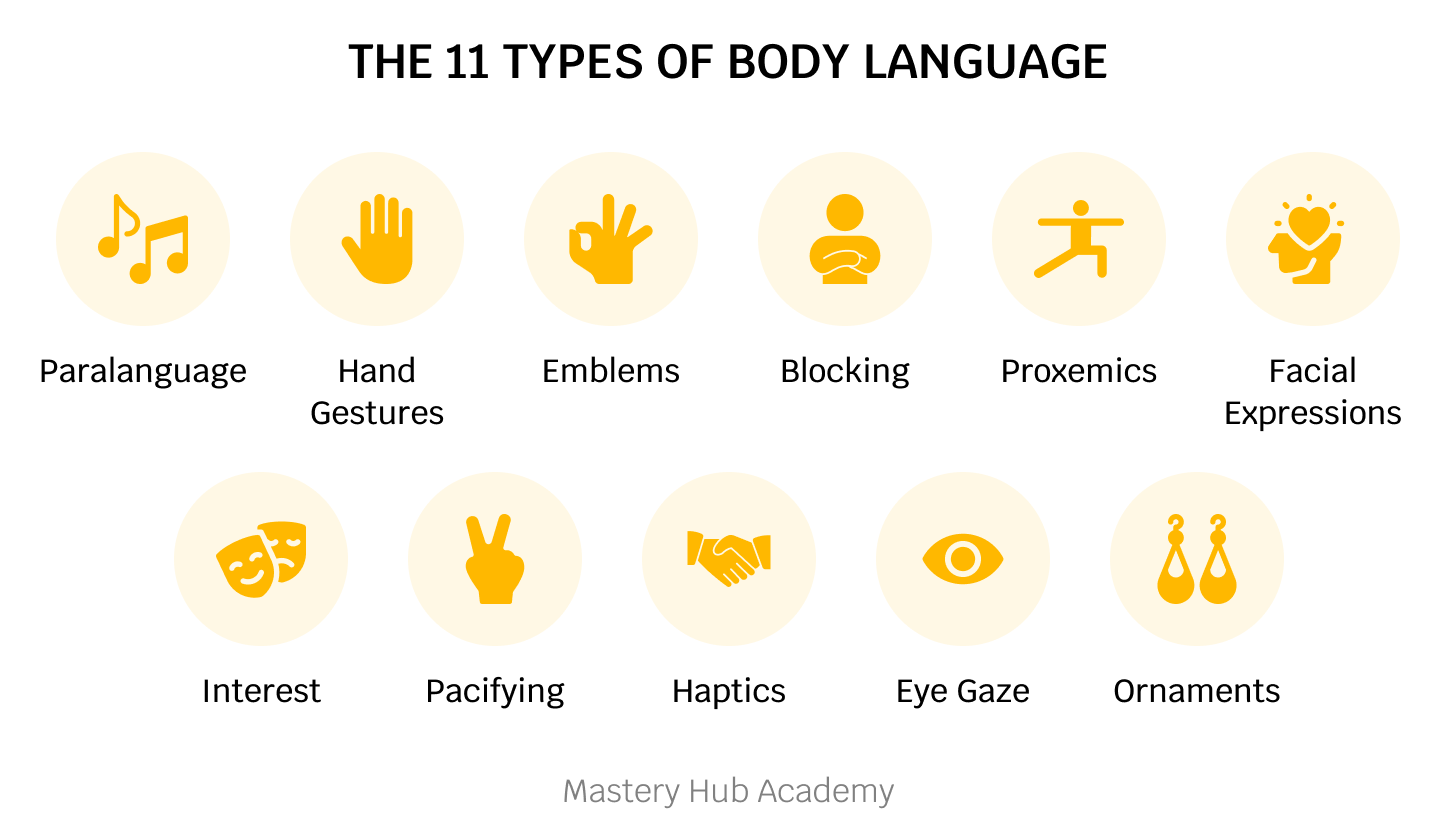
- Facial Expressions:
Facial expressions are powerful indicators of emotions. Dr. Paul Ekman identified 7 universal microexpressions, short facial gestures made by humans when experiencing intense emotions. Observing facial expressions helps reveal hidden emotions.
- Body Proxemics:
Proxemics involves how the body moves in space. It includes gestures, leaning, and movements toward or away from others. Body proxemics convey preferences and feelings, providing insights into interpersonal dynamics.
- Gestures:
Hand gestures are common forms of nonverbal communication. They are often used to express emotions, narrate stories, or provide self-comfort. Research suggests that effective communicators, like popular TED speakers, tend to use more hand gestures.
- Ornaments:
Clothes, jewelry, sunglasses, and hairstyles are considered extensions of body language. Colors, styles, and interactions with ornaments send signals to others. How someone interacts with their watch or ring can also convey information.
- Interest:
Interest cues include signs of attraction or general interest that don’t involve touch. From overt cues like winking and smiling to subtler ones like hair flicks or wrist displays, recognizing and reciprocating these cues is crucial for building rapport.
- Eye Gaze:
Eye movements and changes reveal intentions. Longer gazes, sideways glances, and blocked eyes during interactions can indicate emotions such as attraction, skepticism, or stress.
- Pacifying:
Pacifying behaviors involve self-soothing actions to calm down after an unpleasant experience. Fidgeting, bouncing feet, and arm rubbing are common pacifying behaviors.
- Haptics:
Haptics encompasses touch-related body language cues, including handshakes, touching another’s arm, hugs, pats on the shoulder, and kisses. Touch provides insights into preferences and interpersonal dynamics.
- Blocking:
Blocking cues are performed to metaphorically “vanish” stressors or anxieties. Examples include touching the mouth or crossing arms to create barriers against the environment.
- Paralanguage:
Paralanguage refers to nonverbal vocal elements such as pitch, tone, and cadence. One’s voice can convey confidence or anxiety, making paralanguage a significant aspect of nonverbal communication.
- Emblems:
Emblems are symbolic cues that convey specific messages and are consciously understood by others. Examples include the “OK” sign and “thumbs up.” Cultural and geographic factors heavily influence the meaning of emblems. There are over 800 known emblems.
Comprehending and Deciphering Body Language
The significance of body language goes beyond merely observing cues; it involves interpretation and understanding what to observe. For an in-depth exploration of body language, consider delving into the most advanced book on cues: MICRO EXPRESSIONS AND LIE DETECTION IN POKER
The crucial aspect of understanding body language is adopting a contextualist perspective, as opposed to an absolutist one. Merely learning about body language cues without grasping their application may lead to skewed opinions about others, rather than enhancing understanding.
In the realm of body language, two main camps exist:
Absolutists: They assert that every body language cue unequivocally carries a specific interpreted meaning. For instance, according to absolutists, if a person crosses their arms, it invariably signifies a sense of feeling blocked off.
Contextualists: They contend that the interpretation of body language hinges on the situation. For contextualists, when someone crosses their arms, it could signify various things, such as feeling cold or seeking comfort.
Body Language Mini FAQ
Here’s a compilation of frequently asked questions about body language:
Is body language a science?
Yes, body language is a science. Numerous researchers, including Paul Ekman, Joe Navarro, Barbara and Allan Pease, Desmond Morris, and Carol Kinsey Goman, have scientifically proven the consistency of body language cues. However, individual quirks may differ from the norm.
Is body language universal?
No, while some cues like the eyebrow flash and facial microexpressions are universal, many body language cues are culture-specific or dependent on geographic locations. Greetings vary across cultures, from handshakes to kisses, bows, or other gestures.
What is a nonverbal cue?
A nonverbal cue refers to any nonverbal action during an interaction, such as hand gestures or bodily movements. These cues can offer insights into a person’s intentions or feelings.
What do you do when body language and words don’t match?
In cases of mismatch between words and body language, relying on body language often provides a more accurate interpretation of true feelings. Body language is harder to consciously control compared to words.
Difference between body language and nonverbal communication?
Nonverbal communication is the broader term encompassing all forms of communication without words. Body language is a subset of nonverbal communication focusing on body parts like facial expressions and gestures.
Can body language be misread?
Certainly. Beginners in reading body language may misinterpret cues by neglecting context or other important signals. Misreading can occur if one focuses on a single cue without considering the overall context.
What indicates lying in body language?
Common lying cues include touching the nose, increased eye contact, lip licking, uncertain vocal tonality, and a frozen posture. However, no single cue definitively indicates lying.
How long to become proficient at reading body language?
The time needed to become adept at reading body language varies. Some are naturally skilled, while others may take months to gain a basic understanding. Observing cues, perceptiveness, and dedicated training all influence proficiency.
This mini FAQ aims to provide useful insights. For more information, continue to the next article in the guide. If you have additional questions about body language, feel free to leave a comment for potential inclusion in the mini FAQ!
- https://www.researchgate.net/publication/243768681_Human_facial_expressions_as_adaptations_Evolutionary_questions_in_facial_expression_research
- https://pubmed.ncbi.nlm.nih.gov/21375122/
- https://www.researchgate.net/publication/251630934_Retail_salespeople%27s_mimicry_of_customers_Effects_on_consumer_behavior
- http://j.b.legal.free.fr/Blog/share/M1/Articles%20INC/Mimicry/Mimicry%20for%20money.pdf
- https://henrich.fas.harvard.edu/files/henrich/files/henrichcv2017_oct.pdf
- https://pubmed.ncbi.nlm.nih.gov/16081035/
- https://www.journals.uchicago.edu/doi/10.1086/691462
- http://www.mysmu.edu/faculty/normanli/Lietal2009.pdf
- https://www.researchgate.net/publication/259128505_Inclined_to_better_understanding-The_coordination_of_talk_and_’leaning_forward’_in_doing_repair
- https://www.sciencedaily.com/releases/2023/05/230509122117.htm
- https://journals.sagepub.com/doi/10.1177/1088868316650307
- https://www.livescience.com/what-causes-left-handedness.html
- https://www.sciencedirect.com/science/article/abs/pii/S0924977X20302546
- https://www.livescience.com/vagus-nerve.html
- https://books.google.com/books?id=7xzhVIwIqSMC&lpg=PA180&ots=BWWFrFNWBP&dq=desmond%20morris%20putting%20objects%20mouth&pg=PA180#v=onepage&q=desmond%20morris%20putting%20objects%20mouth&f=false
- https://psycnet.apa.org/record/2004-16480-000
- https://www.researchgate.net/publication/304151618_Body-Language-Communication_194_Aproprioception_The_IW_case
